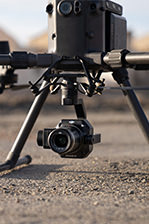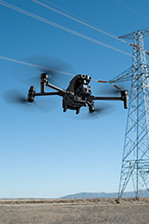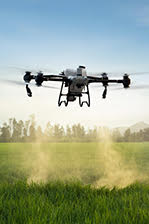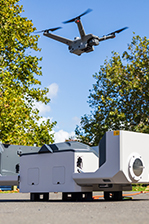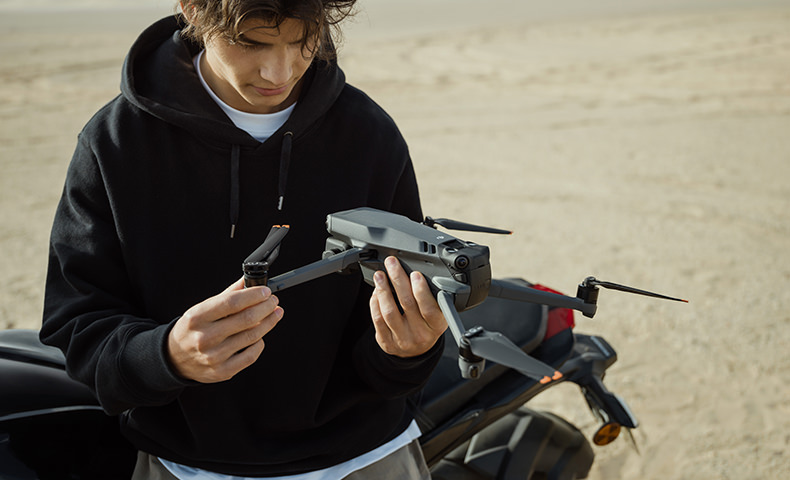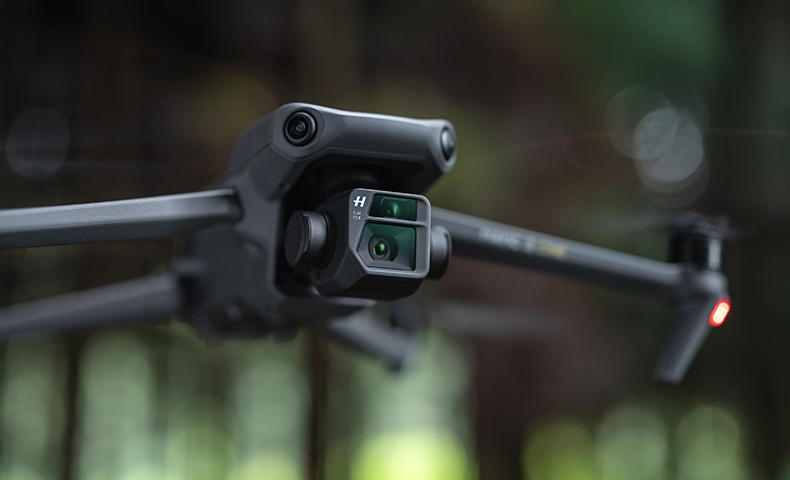DJI Mavic 3 Cine Premium Combo
Capture stunning imagery with the legendary Hasselblad camera and enjoy a smooth flight with omnidirectional obstacle sensing. Every improvement on Mavic 3 sets a higher standard for aerial photography.
Features
Imaging Above Everything
Capture stunning imagery with the legendary Hasselblad camera and enjoy a smooth flight with omnidirectional obstacle sensing. Every improvement on Mavic 3 sets a higher standard for aerial photography. Fly with Mavic 3 and discover imaging above everything.
Dual-Camera System - See More from a Higher Perspective
The legendary Swedish brand Hasselblad has customized the L2D-20C aerial camera for DJI Mavic 3, embedding a professional-grade 4/3 CMOS in an incredibly compact space. Rigorous Hasselblad standards are applied to both hardware performance and software algorithms, bringing imaging quality to an entirely new level.
4/3 CMOS Built for Masterpieces
A larger image sensor not only gives Mavic 3 higher resolution and dynamic range, it also more effectively suppresses noise in low-light environments.
12.8 Stops of Dynamic Range for Optimal Image Quality
The 4/3 CMOS sensor comes with a high 12.8-stop dynamic range to retain more details in highlights and shadows, upgrading your work to a professional level.
Adjustable Aperture For Every Scene
Aperture is adjustable according to the needs of different scenes. In low-light environments, the f/2.8 aperture lets more light in; when the lighting is sufficient, aperture can be adjusted to lower the shutter speed for recording smoother, more natural footage.
Wider FOV to See the Bigger Picture
Weighting less than 13 g, the 24mm equivalent lens not only supports autofocus, it also has a 84° FOV to capture more in every frame.
Focusing is faster with VDAF Technology.
The Hasselblad camera on Mavic 3 features Vision Detection Auto Focus (VDAF) technology, which works with multiple vision sensors to utilize distance data and optimize focusing speed.
Hasselblad Natural Colour Solution
Mavic 3 features the Hasselblad Natural Colour Solution, which is the result of decades of photographic experience, resulting in vivid, natural colors with the simple press of the shutter.
Excellence without Presets
Complex color presets have never been part of Hasselblad’s philosophy, neither of Mavic 3. Starting from the pixel level of sensors, Hasselblad developed the Hasselblad Natural Color solution (HNCS), a new perspective to handle a variety of scenes by easily reproducing accurate and natural colors.
Pixel Calibration for Ultimate Image Quality
To ensure Mavic 3 captures natural colors in the same way other Hasselblad cameras do, the L2D-20c lens adopts the same rigorous standards and has every pixel of the sensor calibrated, with the HNCS embedded.
Accurate Color Reproduction
During shooting, RGB color data obtained by the sensor will be converted through Hasselblad's unique image processing algorithm and color processing mode so that natural colors in various scenes can be precisely reproduced without any presets.
Let Results Speak for Themselves
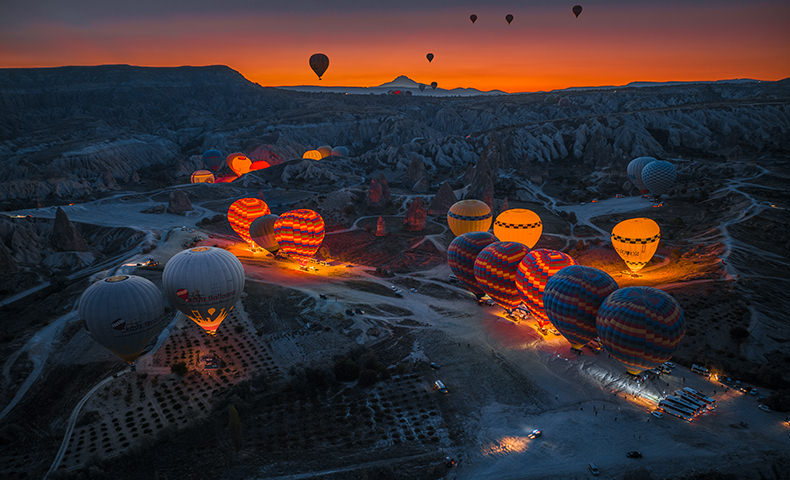
Create professional imagery with the well-built Hasselblad L2D-20c camera system.
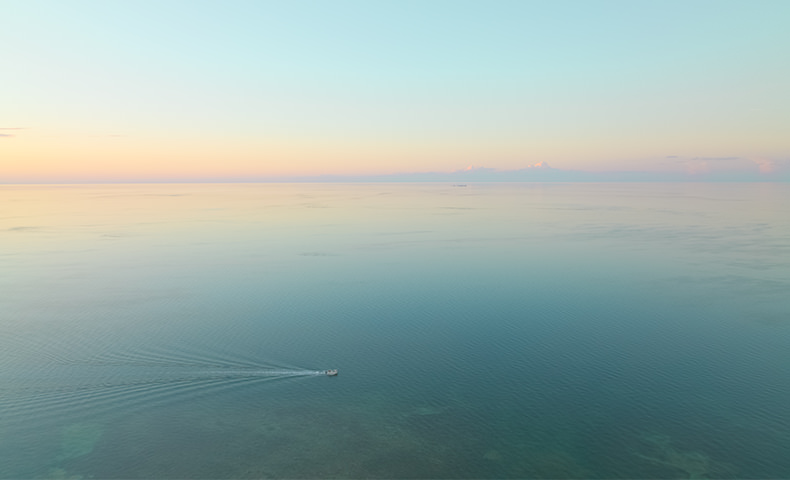
Higher dynamic range allows for a more natural transitions between highlights and shadows, preserving rich visual information with a greater sense of depth.
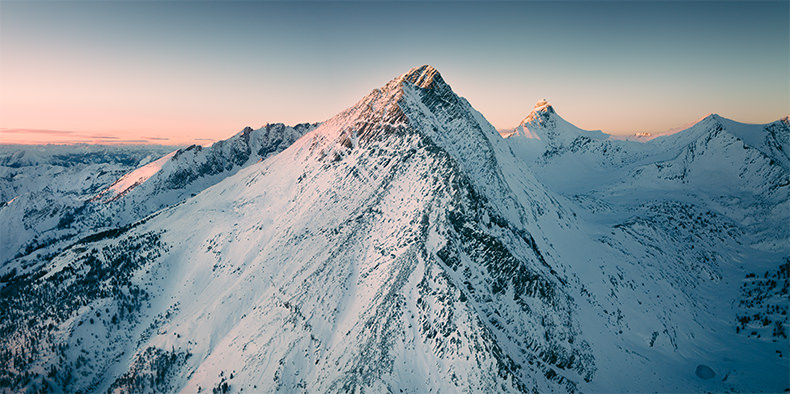
A larger sensor size keeps images clean in low light.
Professional Video Specifications
5.1K Video Recording[1]
DCI 4K/120fps[1]
Apple ProRes 422 HQ[2]
10-bit D-Log Color Profile
With professional imaging performance, Mavic 3 not only records aerial videos at high resolution and framerates, but also captures 1 billion colors with 10-bit D-Log color profile, presenting a more natural gradation of sky colors with more details retained for greater flexibility in post production.
The Mavic 3 Cine supports Apple ProRes 422 HQ encoding[2] with a maximum data rate of 3772Mbps. In addition, it also supports a built-in 1TB SSD[3] and 10Gbps lightspeed data cable to further facilitate professional filming and creation.
Tele Camera
Explore Mode
A unique tele lens makes Explore mode the perfect way to scout and plan your shots.
28x Hybrid Zoom
162 mm, f/4.4
When scenes or subjects are far away, use the tele lens to zoom in and save time, or record from a distance without disturbing the subject.
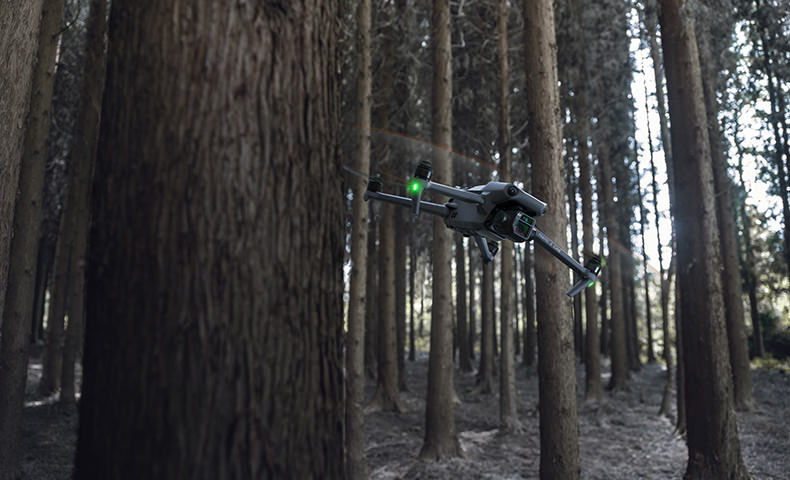
Flight Performance
Omnidirectional Obstacle Sensing
Mavic 3 ensures you a collision-free flight, and all you need to do is focusing on shooting itself. Multiple wide-angle vision sensors onboard work seamlessly with a high performance vision computing engine to sense obstacles in all directions[4] precisely and plan a safe flight route that avoids them.
Advanced RTH
Always end on a high note with Advanced RTH. Obstacles along the way back to the home point are easily detected and avoided. With the brand new Advanced RTH, Mavic 3 will automatically figure out the optimal route to avoid obstacles and return to home safely.
Whether activated by the user or triggered by signal loss, Mavic 3 can easily return to the home point safely in adequate lighting conditions.
APAS 5.0
Mavic 3 makes flight more fun than ever with recording that is no longer interrupted by obstacles along the way. When flying, Mavic 3 continually senses objects in all directions and bypasses them smoothly and quickly.
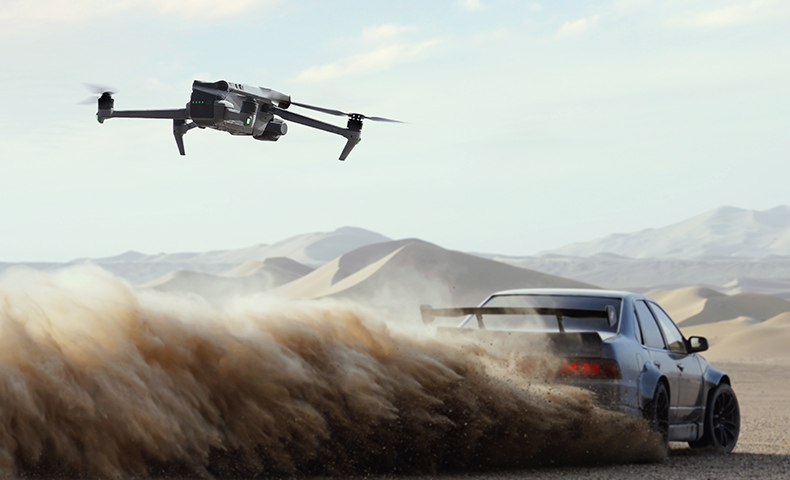
Upgraded Performance
46 minutes
Extended Flight Time[5]
15 km
Video Transmission Range[6]
1080p/60fps
FHD High-Frame-Rate Live Feed[7]
4G Transmission
Facilitated with DJI Cellular Transmission Dongle[8]
Extreme-Precision
Positioning technology
Advanced flight technologies
Extended Flight Time
Execute every step, from flight route planning to composition and even record a timelapse video, all during a single flight. Compared with the previous generation, Mavic 3’s wind resistance has improved by 35%. It also uses motors and propellers with higher energy efficiency along with a high-capacity battery that extends the flight time to 46 minutes[5].
Fly Farther, See More
Mavic 3 not only flies farther with a 15km transmission range, it also transmits signals with higher stability and less video lag, offering you greater peace of mind during flight.
Strong Interference - City Centers (approx. 1.5-3 km)
Medium Interference - Suburban Areas (approx. 3-9 km)
Little Interference – Open Landscapes (approx. 9-15 km)[9]
FHD High Framerate Transmission with Visible Smoothness
Mavic 3 is DJI’s first-ever drone able to transmit a 1080p/60fps live feed. This means the camera view is displayed at specifications close to what the camera actually records. It also makes Mavic 3 more responsive to your control.
DJI Cellular Transmission Dongle Adds One More Layer to Flight Safety
With the cellular dongle[8] attached, Mavic 3 can switch to 4G networks for smooth, stable connection when O3+ signals are blocked by buildings, hills, trees, or other structures. During flight, the O3+ transmission system coordinates with 4G transmission and switches seamlessly to ensure a smooth shooting experience.
Extreme Precision Positioning
The high-precision positioning of Mavic 3 not only ensures clearer long-exposure shots, it also helps record smoother time-lapse videos. In short, it makes Mavic 3 more stable whenever it hovers.
Footnotes:
* Tested with a production model DJI Mavic 3 in a closed environment in favorable conditions and an unobstructed wireless signal. Actual results may vary depending on environment, usage, and firmware version.
** All videos and photos on this page were taken in strict compliance with local laws and regulations.
- ActiveTrack is not available at video resolutions higher than 4K or frame rates over 60fps.
- DJI Mavic 3 Cine supports Apple ProRes 422 HQ and H.264/H.265 encoding, while Mavic 3 only supports H.264/H.265 encoding.
- Actual available storage space may be reduced due to system configuration. For more details, see the Mavic 3 specs.
- DO NOT use the aircraft in severe weather conditions including heavy wind exceeding 13.8 m/s, snow, rain, fog, hail, or lightning. DO NOT fly the aircraft 6,000 m (19,685 ft.) or higher above sea level. DO NOT fly the aircraft in environments where the temperature is below -10° C (14° F) or above 40° C (104° F). DO NOT take off from moving objects such as cars or boats. DO NOT fly close to reflective surfaces such as water or snow. Otherwise, the vision system may be limited. When the GNSS signal is weak, fly the aircraft in environments with good lighting and visibility. Low ambient light may cause the vision system to function abnormally. DO NOT fly near areas with magnetic or radio interference. Common source of magnetic or radio interference interferece includes Wi-Fi hotspots, routers, Bluetooth devices, high-voltage lines, large-scale power transmission stations, radar stations, mobile base stations, and broadcasting towers. Be careful when taking off in desert or beach areas to avoid sand entering the aircraft. Fly the aircraft in open areas. Buildings, mountains, and trees may block the GNSS signal and affect the on-board compass.
- Measured by Mavic 3 flying at a constant speed of 32.4 kph in a windless environment at sea level until the battery reached 0%. Data is for reference only. Please pay attention to the RTH reminder on the DJI Fly app during flight.
- Unobstructed, free of interference, and when FCC-compliant. Maximum flight range specification is a proxy for radio link strength and resilience. Always follow local rules and regulations and fly your drone within your visual line of sight unless otherwise permitted.
- Unobstructed and free of interference. Actual resolution may vary depending on the quality of the transmission signal.
- Coming soon. Sold separately.
- Unobstructed, free of interference, and when FCC-compliant. Maximum flight range specification is a proxy for radio link strength and resilience.
Product Specifications
Aircraft
Takeoff Weight: Mavic 3: 895 g - Mavic 3 Cine: 899 g
Dimensions (Folded/Unfolded): Folded (without propellers) 221×96.3×90.3 mm (Length×Width×Height) - Unfolded (without propellers) 347.5×283×107.7 mm (Length×Width×Height)
Diagonal Length: 380.1 mm
Max Ascent Speed: 1 m/s (C mode) - 6 m/s (N mode) - 8 m/s (S mode)
Max Descent Speed: 1 m/s (C mode) - 6 m/s (N mode) - 6 m/s (S mode)
Max Flight Speed (at sea level, no wind): 5 m/s (C mode) - 15 m/s (N mode) - 21 m/s (S mode)
Max Service Ceiling Above Sea Level: 6000 m
Max Flight Time (no wind): 46 minutes
Max Hovering Time (no wind):
40 minutes
Max Flight Distance:
30 km
Max Wind Speed Resistance:
12 m/s
Max Tilt Angle: 25° (C mode) - 30° (N mode) - 35° (S mode)
Max Angular Velocity:
200°/s
Operating Temperature:
-10° to 40° C (14° to 104° F)
GNSS:
GPS + Galileo + BeiDou
Hovering Accuracy Range: Vertical: ±0.1 m (with Vision Positioning); ±0.5 m - (with GNSS Positioning) - Horizontal: ±0.3 m (with Vision Positioning); ±0.5 m - (with High-Precision Positioning System)
Internal Storage: Mavic 3: 8 GB (available space is approx. 7.2 GB) - Mavic 3 Cine: 1TB (available space is approx. 934.8 GB)
Hasselblad Camera
Sensor:
4/3 CMOS, Effective pixels: 20 MP
Lens: FOV: 84° - Format Equivalent: 24 mm - Aperture: f/2.8 to f/11 - Focus: 1 m to ∞ (with autofocus)
ISO Range:
Video: 100-6400 - Still Image: 100-6400
Shutter Speed:
Electronic Shutter: 8-1/8000 s
Max Image Size:
Main Unit: 5280×3956
Still Photography Modes:
Single shot: 20MP Photos - Automatic Exposure Bracketing (AEB): 20 MP, 3/5 bracketed frames at 0.7 EV - Timed: 20 MP, 2/3/5/7/10/15/20/30/60 s
Video Resolution:
Apple ProRes 422 HQ
5.1K: 5120×2700@24/25/30/48/50fps
DCI 4K: 4096×2160@24/25/30/48/50/60/120*fps
4K: 3840×2160@24/25/30/48/50/60/120*fps
H.264/H.265
5.1K: 5120×2700@24/25/30/48/50fps
DCI 4K: 4096×2160@24/25/30/48/50/60/120*fps
4K: 3840×2160@24/25/30/48/50/60/120*fps
FHD: 1920×1080p@24/25/30/48/50/60/120*/200*fps
* Framerates above are recording framerates. Videos will be played as slow-motion videos.
Max Video Bitrate:
H.264/H.265 Bitrate: 200 Mbps
Supported File Formats:
exFAT
Photo Format:
JPEG/DNG (RAW)
Video Formats:
Mavic 3:
MP4/MOV (MPEG-4 AVC/H.264, HEVC/H.265)
Mavic 3 Cine:
MP4/MOV (MPEG-4 AVC/H.264, HEVC/H.265)
MOV (Apple ProRes 422 HQ)
Tele Camera
Sensor:
1/2-inch CMOS
Shutter Speed:
Electronic Shutter: 2-1/8000 s
Lens:
FOV: 15° - Format Equivalent: 162mm - Aperture: f/4.4 - Focus: 3 m to ∞
ISO Range:
Video: 100-6400 - Still Image: 100-6400
Max Image Size:
4000×3000
Photo Format:
JPEG
Video Formats:
MP4/MOV (MPEG-4 AVC/H.264, HEVC/H.265)
Still Photography Modes:
Single shot: 12MP Photos
Video Resolution:
H264/H.265 - 4K: 3840×2160@30 fps - FHD: 1920×1080@30 fps
Digital Zoom:
4x
Gimbal
Stabilization:
3-axis motorized (tilt, roll, pan)
Mechanical Range:
Tilt: -135° to 100° - Roll: -45° to 45° - Pan: -27° to 27°
Controllable Range:
Tilt: -90° to 35° - Pan: -5° to 5°
Max Control Speed (tilt):
100°/s
Angular Vibration Range:
±0.007°
Sensing
Sensing System:
Omnidirectional binocular vision system, supplemented with an infrared sensor at the bottom of the aircraft
Forward :
Measurement Range: 0.5-20 m
Detection Range: 0.5-200 m
Effective Sensing Speed: Flight Speed ≤ 15m/s
FOV: Horizontal 90°, Vertical 103°
Backward:
Measurement Range: 0.5-16 m
Effective Sensing Speed: Flight Speed ≤ 12m/s
FOV: Horizontal 90°, Vertical 103°
Lateral:
Measurement Range: 0.5-25 m
Effective Sensing Speed: Flight Speed ≤ 15m/s
FOV: Horizontal 90°, Vertical 85°
Upward:
Measurement Range: 0.2-10 m
Effective Sensing Speed: Flight Speed ≤ 6m/s
FOV: Front and Back 100°, Left and Right 90°
Downward:
Measurement Range: 0.3-18 m
Effective Sensing Speed: Flight Speed ≤ 6m/s
FOV: Front and Back 130°, Left and Right 160°
Operating Environment: Forward, Backward, Left, Right, and Upward: Surface with a clear pattern and adequate lighting (lux>15)
Downward: Surface with a clear pattern and adequate lighting (lux >15). Diffuse reflective surface with diffuse reflectivity>20% (e.g. wall, tree, person)
Video Transmission
Video Transmission System:
O3+
Live View Quality:
Remote Controller: 1080p@30fps/1080p@60fps
Operation Frequency:
2.400-2.4835 GHz - 5.725-5.850 GHz
Max Transmission Distance (unobstructed, free of interference and aligned with controller):
2.400-2.4835 GHz; 5.725-5.850 GHz
FCC: 15 km
CE: 12 km
SRRC: 8 km
MIC: 8 km
Max Download Bitrate:
SDR:
5.5MB/s (with RC-N1 remote controller)
15MB/s (with DJI RC Pro remote controller)
Wi-Fi 6:
80MB/s
Latency (depending on environmental conditions and mobile device):
130 ms (with RC-N1 remote controller)
120 ms (with DJI RC Pro remote controller)
Antennas:
4 antennas, 2T4R
Transmitter Power (EIRP):
2.4 GHz: ≤33 dBm (FCC); ≤20 dBm (CE/SRRC/MIC)
5.8 GHz: ≤33 dBm (FCC), ≤30 dBm(SRRC), ≤14 dBm(CE)
Battery
Capacity:
5000 mAh
Voltage:
15.4 V
Charging Voltage Limit:
17.6 V
Battery Type:
LiPo 4S
Energy:
77 Wh
Weight:
335.5 g
Charging Temperature:
5° to 40° C (41° to 104° F)
Battery Charger
Input:
100-240 V AC, 47-63 Hz, 2.0 A
USB-C Output:
USB-C: 5.0 V⎓5.0 A/9.0 V⎓5.0 A/12.0 V⎓5.0 A/15.0 V⎓4.3 A/20.0 V⎓3.25 A/5.0~20.0 V⎓3.25 A
USB-A output:
USB-A: 5 V⎓2 A
Rated Power:
65 W
Charging Hub
Input:
USB-C: 5-20 V⎓5.0 A max
Output:
Battery: 12-17.6 V⎓5.0 A max
Rated Power:
65 W
Charging Type:
Charges three batteries in sequence.
Charging Temperature Range:
5° to 40° C (41° to 104° F)
Car Charger
Input:
Car Power Input: 12.7-16 V⎓6.5 A, rated voltage 14 V DC
Output:
USB-C: 5.0 V⎓5.0 A/9.0 V⎓5.0 A/12.0 V⎓5.0 A/15.0 V⎓4.3A/20.0 V⎓3.25 A/5.0~20.0 V⎓3.25 A<br>USB-A: 5 V⎓2 A
Rated Power:
65 W
Charging Time:
Approx. 96 minutes
Charging Temperature Range:
5° to 40° C (41° to 104° F)
Storage
Supported SD Cards:
SDXC or UHS-I microSD card with a capacity of up to 2 TB
SSD Specs:
Standard bitrate video recommended microSD Cards list:
H.265 Codec :
5.1K : 5120x2700@24/25/30/48/50fps
DCI 4K : 4096x2160@24/25/30/48/50/60/120fps 4K: 3840x2160@24/25/30/48/50/60/120fps
FHD : 1920x1080@24/25/30/48/50/60/120/200fps
H.264 Codec :
DCI 4K : 4096x2160@24/25/30/48/50/60fps
4K : 3840x2160@24/25/30/48/50/60fps
FHD: 1920x1080@24/25/30/48/50/60/120/200fps
SanDisk Extreme Pro 64G v30 A2 microSDXC SanDisk Extreme Pro 128G v30 A2 microSDXC SanDisk Extreme Pro 256G v30 A2 microSDXC SanDisk Extreme Pro 400G v30 A2 microSDXC SanDisk High Endurance 64G v30 XC I microSDXC SanDisk High Endurance 128G v30 XC I microSDXC SanDisk High Endurance 256G v30 XC I microSDXC SanDisk Extreme 128G v30 A2 microSDXC
SanDisk Extreme 256G v30 A2 microSDXC SanDisk Extreme 512G v30 A2 microSDXC Lexar 667x 64G microSDXC
Lexar 667x 128G microSDXC
Lexar 667x 256G microSDXC
Lexar High Endurance 64G V30 XC I microSDXC Lexar High Endurance 128G microSDXC Samsung Evo Plus 64G microSDXC
Samsung Evo Plus 128G microSDXC
Samsung Evo Plus 256G microSDXC
Samsung Evo Plus 512G microSDXC
High bitrate video recommended microSD Cards list:
H.264 Codec :
5.1K: 5120x2700@24/25/30/48/50fps DCI 4K: 4096x2160@120fps
4K : 3840x2160@120fps
SanDisk Extreme Pro 64G v30 A2 microSDXC SanDisk Extreme Pro 128G v30 A2 microSDXC SanDisk Extreme Pro 256G v30 A2 microSDXC SanDisk Extreme Pro 400G v30 A2 microSDXC SanDisk High Endurance 64G v30 XC I microSDXC SanDisk High Endurance 128G v30 XC I microSDXC SanDisk High Endurance 256G v30 XC I microSDXC Lexar High Endurance 64G V30 XC I microSDXC Lexar High Endurance 128G microSDXC
Lexar 667x 64G microSDXC Lexar 667x 128G microSDXC Lexar 667x 256G microSDXC
SSD Specs:
Capacity: 1 TB
Max Read Speed: 700MB/s*
Max Write Speed: 471MB/s*
* Data refers to the read and write speed inside the aircraft. Actual read and write speed of computer and other external devices may affect actual speed.
DJI RC Pro
General Specs
Battery:
Li-ion (5000 mAh @ 7.2 V)
Charging Type:
Recommended to be charged with USB charger at 12 V or 15 V
Rated Power:
12 W
Storage Capacity:
32GB internal + expandable storage via microSD card
Charging Time:
2 hours (with USB charger at 12 V) - 1.5 hours (with USB charger at 15 V)
Operating Time:
3 hours
Video Output Port:
Mini-HDMI port
Operating Temperature:
-10° to 40°C (14° to 104° F)
Storage Temperature Range:
Less than one month: -30° to 60° C (-22° to 140° F)
One to three months: -30° to 45° C (-22° to 113° F)
Three to six months: -30° to 35° C (-22° to 95° F)
More than six months: -30° to 25° C (-22° to 77° F)
Charging Temperature:
5° to 40° C (41° to 104° F)
Supported Aircraft Models [2]:
DJI Mavic 3
GNSS:
GPS + Galileo + GLONASS
Dimensions:
183.27×137.41×47.6 mm (antennas folded, controllers not mounted)
183.27 x 203.35 x 59.84 mm (antennas unfolded, controllers mounted)
Weight: Approx. 680 g
Model:
RM510
Video Transmission
Video Transmission System:
O3+
Max Transmission Distance (unobstructed, free of interference):
15 km (FCC) - 8 km (CE/SRRC/MIC)
Operating Frequency [1]:
2.400-2.4835 GHz - 5.725-5.850 GHz
Antennas:
4 Antennas, 2T4R
Transmitter Power (EIRP): 2.4 GHz: ≤33 dBm (FCC); ≤20 dBm (CE/SRRC/MIC)
5.8 GHz: ≤33 dBm (FCC); ≤14 dBm (CE); ≤23 dBm (SRRC)
Wi-Fi
Protocol:
802.11a/g/n/ac/ax Support 2×2 MIMO Wi-Fi
Operating Frequency [1]:
2.400GHz-2.4835 GHz; 5.725-5.850 GHz
Transmitter Power (EIRP): 2.4 GHz: ≤26 dBm (FCC); ≤20 dBm (CE/SRRC/MIC)
5.8 GHz: ≤26 dBm (FCC/SRRC); ≤14 dBm (CE)
Bluetooth
Protocol:
Bluetooth 5.1
Operating Frequency:
2.400-2.4835 GHz
Transmitter Power (EIRP):
≤8 dbm
Screen
Resolution:
1920×1080
Dimensions:
5.5 inches
Frame Rate:
60 fps
Brightness:
1000 nits
Touch Control:
10-point multi-touch
Storage
Supported SD Cards: SanDisk Extreme PRO 64GB V30 A2 microSDXC
SanDisk High Endurance 64GB V30 microSDXC
SanDisk Extreme 128GB V30 A2 microSDXC
SanDisk Extreme 256GB V30 A2 microSDXC
SanDisk Extreme 512GB V30 A2 microSDXC
Lexar 667x 64GB V30 A2 microSDXC
Lexar High-Endurance 64GB V30 microSDXC
Lexar High-Endurance 128GB V30 microSDXC
Lexar 667x 256GB V30 A2 microSDXC
Lexar 512GB V30 A2 microSDXC Samsung EVO 64GB V30 microSDXC Samsung EVO Plus 128GB V30 microSDXC Samsung EVO Plus 256GB V30 microSDXC Samsung EVO Plus 512GB V30 microSDXC Kingston 128GB V30 microSDXC
In the box
DJI Mavic 3 × 1
DJI Mavic 3 Cine × 1
DJI RC Pro × 1
DJI RC Pro Control Sticks × 1
DJI Mavic 3 Intelligent Flight Battery × 3
DJI Mavic 3 Low-Noise Propellers (pair) × 6
DJI Mavic 3 Battery Charging Hub × 1
DJI 65W Portable Charger × 1
DJI Mavic 3 Storage Cover × 1
DJI Mavic 3 ND Filters Set (ND4\8\16\32) × 1
DJI Mavic 3 ND Filters Set (ND64\128\256\512) × 1
DJI Convertible Carrying Bag × 1
DJI 10Gbps Lightspeed Data Cable × 1
Type-C Cable × 1
WHY BUY FROM US?
By buying from Ferntech, you'll have the confidence that you are dealing directly with New Zealand's leading drone experts. Our staff are knowledgable drone pilots who offer expert advice, trusted support and superior specialist service. Only through us will you receive a full New Zealand warranty, phone and email support, and access to our certified Repairs Centre with DJI-qualified drone technicians. And we guarantee that we will have the best prices on the market — if not let us know and we will match any price (conditions apply).
Warranty Details
.
Product
Compared with DJI Mavic 2, what major upgrades does Mavic 3 have?
DJI Mavic 3 is DJI’s latest flagship consumer drone. Compared with Mavic 2, Mavic 3 has substantially upgraded camera performance, integrating a 4/3 CMOS Hasselblad camera and a lightweight 24mm equivalent tele camera. Mavic 3 is capable of capturing 5.1K/50fps and 4K/120fps videos, and Mavic 3 Cine even supports Apple ProRes 422 HQ encoding, offering higher image quality and greater flexibility during post-processing. In addition to the camera system, Mavic 3 also delivers a comprehensively upgraded flight experience. Flight time has been extended to 46 minutes, and the new O3+ extends video transmission range to a maximum distance of 15 km. Obstacle sensing has been developed into a truly omnidirectional system, with a more powerful APAS 5.0 and Advanced RTH to give users greater peace of mind during flight.
What app is required for using DJI Mavic 3?
The DJI Fly app.
How many versions does the DJI Mavic 3 Series have and what are the differences between them?
DJI Mavic 3 comes in two versions: DJI Mavic 3 and DJI Mavic 3 Cine. Compared with the Mavic 3, DJI Mavic 3 Cine supports Apple ProRes 422 HQ encoding and comes with a built-in 1TB SSD for high-speed data storage.
Does the DJI Mavic 3 Cine support the DJI RC-N1 Remote Controller?
Yes.
Does DJI Mavic 3 support the DJI Goggles or the DJI Motion Controller?
No.
Camera
What should I pay attention to when using the built-in gimbal lock on DJI Mavic 3?
DJI Mavic 3 features a built-in gimbal lock to prevent the 3-axis gimbal and camera from shaking, adding an additional layer of safety during transportation and storage. Precautions for use:
1. The normal operating temperature of the gimbal lock is -10° to 40° C (14 to 104° F). If temperatures are outside of this range, it may fail to lock or unlock properly. You will be prompted by the DJI Fly app to use it within the temperature range. For emergency use in special situations, you can manually twist the three axes without damaging the gimbal itself, but this measure is not recommended.
2. The built-in gimbal lock may become unlocked due to external impact. In this case, power on the aircraft and then power off to lock again.
3. After the gimbal is locked, vibrations in each axis may occur.
What is the most efficient way to export files from the built-in SSD of DJI Mavic 3 Cine?
Use the DJI 10Gbps Lightspeed Data Cable in the box to connect the aircraft to your computer via the USB-C port. Make sure the write speed of your storage device is greater than 700MB/s. Other data cables are not recommended since they may take longer to transfer files as high-speed transmission may not be supported.
How can I use DJI Mavic 3’s tele camera?
The tele camera is available only when using Explore mode. Once Explore mode is enabled and the camera zoom exceeds 7x, Mavic 3 will switch to the tele camera automatically.
Does Explore mode support Pro mode?
No.
Can I take RAW photos with Explore mode?
No.
Does Explore mode support video recorded with Apple ProRes encoding?
No.
Remote Controller and Video Transmission
What is the transmission range of DJI Mavic 3?
When using the DJI RC Pro or DJI RC-N1 Remote Controller, the maximum transmission range is 15 km.
How can I set the video transmission feed to 48/50/60fps?
Once video recording is set to 30fps or above at any resolution, the video transmission live feed framerate will automatically switch to 48/50/60fps depending on the mobile phone decoding capability and transmission bandwidth.
Does either version of Mavic 3 support simultaneous control by multiple remote controllers?
No.
Flight Performance
Were there any upgrades to the propellers used on DJI Mavic 3?
The propeller structure adopts a new design, with the edges made of a softer material. This not only reduces noise during flight, but also causes less damage to people or objects in the event of an accident.
What should I pay attention to when using the DJI Mavic 3 propellers?
Replace the propellers in a timely manner to ensure safety, especially if any propeller is damaged or misshaped.
How do I attach DJI Mavic 3 propellers correctly?
Attach the propellers with gray markings on the motors with the same markings, and attach the other two without gray markings on the corresponding motors. The DJI Fly app will also send a prompt before takeoff.
How is the flight time of DJI Mavic 3 measured?
The flight time was measured in a controlled test environment. Specific test conditions are as follows: No wind, at sea level, constant flight speed of 32.4 kph, APAS off, AirSense off, camera parameters set to 1080p/24fps, video mode off, and flying from 100% battery to 0% battery. Results may vary depending on environment, usage scenario, and firmware version.
Flight Safety and Obstacle Sensing
Compared with the previous generation, what upgrades does the onmidirectional sensing system on DJI Mavic 3 have?
DJI Mavic 3 can detect obstacles in all directions with extreme precision. Multiple sensing cameras with a wider range of detection help Mavic 3 respond to obstacles earlier. In a well-lit environment, Mavic 3 can avoid obstacles faster and more smoothly, capturing stable footage safely even when flying laterally or backward.
What improvements does ActiveTrack 5.0 have compared with the previous version?
ActiveTrack 5.0 tracks subjects whether the aircraft is moving forward, backward, left, or right. Embedded with the newest subject recognition technology, ActiveTrack 5.0 uses multiple vision sensors simultaneously to recognize a subject, differentiate it from other objects, and lock the subject in frame. Mavic 3 is able to track in all directions and adjust tracking angles smoothly for more natural results. Thanks to new environment and subject sensing algorithms, Mavic 3 responds earlier to subject movements and environment information, and plans a more optimum tracking route in advance to record smooth and stable footage.
What improvements does Advanced RTH have compared with the previous version?
Compared to the 20 meters of its predecessor, DJI Mavic 3 has a maximum forward-sensing distance of 200 meters during RTH. During flight, Mavic 3 will use advanced environmental sensing technology to determine the safest, most energy-efficient flight route to return the drone to its home point.
Intelligent Features
Are there any upgrades to the QuickTransfer of Mavic 3 compared with the previous version?
With the new Wi-Fi 6 protocol, data transmission is even faster, with download speeds reaching up to 80MB/s. In addition, compared to DJI Mini 2, Mavic 3 automatically selects the fastest transmission mode based on the wireless environment without switching to Wi-Fi mode manually, making it easier to use.
Accessories
How can I use the DJI 65W Portable Charger?
The DJI 65W Portable Charger comes with a 65W USB-C cable to charge Mavic 3's battery. With another USB-A port and a USB-C data cable included in the package, it can also charge the remote controller at the same time. It is recommended to use a standard USB-C cable to charge the Mavic 3 intelligent flight battery.
How long does it take to fully charge a DJI Mavic 3 Intelligent Flight Battery?
Approximately 96 minutes when using the DJI 65W Portable Charger.
What are the highlights of the DJI Convertible Carrying Bag?
"The DJI Convertible Carrying Bag can be converted between a shoulder bag and backpack to suit users' portability needs.
1. The shoulder bag configuration provides enough space for Mavic 3 and its accessories, offering a more convenient shape that makes items easily accessible.
2. The backpack configuration provides enough space for Mavic 3 and its accessories, along with a 16-inch laptop and other small items for daily use, making it perfect for short trips."
Can I use other chargers with USB-C ports to charge the Mavic 3 battery?
Yes. However, to ensure charging efficiency, we still recommend using the DJI 65W Portable Charger. Other chargers at 60W or above supporting PPS/PD protocol are also recommended.
Can I charge Mavic 3 directly through the built-in USB-C port of the aircraft body?
Yes.
RC Pro
Compared with the DJI Smart Controller, what major upgrades does DJI RC Pro have?
Featuring a next-generation processor, DJI RC Pro is the newest high-performance remote controller platform with built-in screen. Compared with the DJI Smart Controller, the performance of the CPU and GPU of DJI RC Pro is increased by 4 times and 7 times respectively, with boosted system performance and lower power consumption, offering longer use duration and a smoother control experience. DJI RC Pro also features a comprehensively improved transmission system. It supports the brand-new O3+ with livestreaming at up to 1080p/60fps and a max transmission range of 15 km. 4G network communication is also enabled to enhance flight safety when used with the DJI Cellular Transmission Dongle. In addition, DJI RC Pro adopts the same control stick design of DJI FPV for more precise, responsive, and smooth operation.
What are the differences between the high-bright display of DJI RC Pro and a normal display?
DJI RC Pro provides brightness up to 1000 nits, showing clear details even under direct sunlight, making it an optimal tool for outdoor use. Normal phone screens, however, cannot provide a constant high bright display and will automatically decrease brightness in an outdoor environment.
What ports does DJI RC Pro have?
One mini-HDMI port (supports 4K video output), one microSD card slot, and one USB Type-C port (supports video output, external microSD card, and charging).
Does DJI RC Pro have a speaker and microphone?
DJI RC Pro has a built-in speaker and no microphone. For phone calls and recording, it supports external microphones through the USB-C port.
Does the DJI RC Pro have customizable buttons?
Yes. The C1, C2, C3, and the 5D button on DJI RC Pro can be customized in the DJI Fly app for more convenient control of the drone.
How can I update the DJI RC Pro system and the apps installed on it?
Apps can be updated through the system or the internet.
What is Outdoor mode?
In Outdoor mode, the image display will be automatically enhanced and optimized so that details are still clearly visible, even under direct sunlight.
Can I install third-party apps on DJI RC Pro?
Yes. You can download third-party apps through the built-in browser or install APK files from a microSD card. (DJI will not be liable for any permission or safety issues resulting from use of third-party apps. If an installed third-party app prevents optimal use of your controller, it is suggested to remove the app or restore the controller to original factory settings.)
Does DJI RC Pro support fast charging?
Yes, it supports mainstream fast-charging solutions. It takes 2 hours to fully charge DJI RC Pro with a 12V charger, and 1.5 hours with a 15V charger.
What is the operating time of DJI RC Pro?
3 hours or longer under normal operating conditions.
What aircraft does the DJI RC Pro support?
Currently, DJI RC Pro is compatible with DJI Mavic 3. More compatible models are subject to future updates on the DJI official website.









